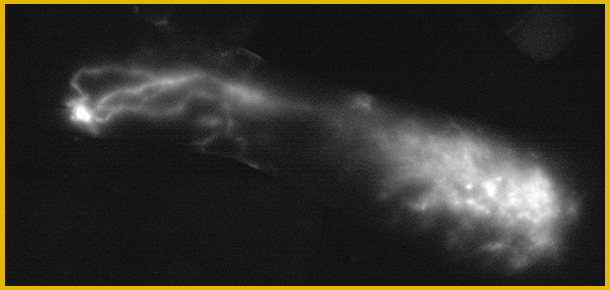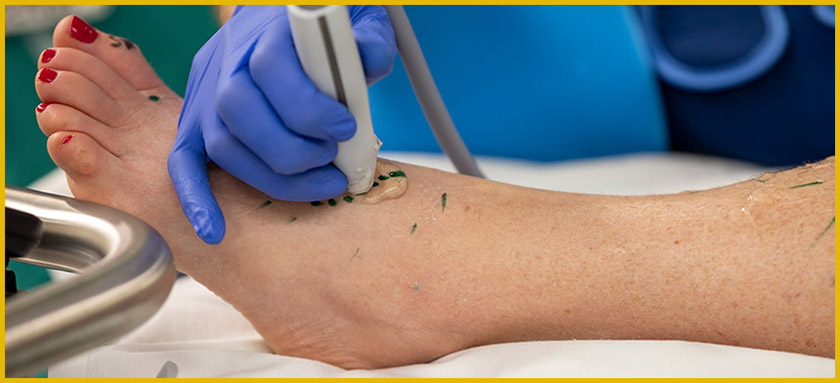Diagnosing Lymphedema
There are several types of tests that can be used to diagnose and stage (determine the severity of) lymphedema. Certain tests can also be used to help plan surgeries. Not all patients need every test. Tests may include:
Imaging
ICG lymphography uses a specialized camera to visualize dye that is injected into the skin. The technology allows providers to see the actual lymphatic channels as they go up an arm or leg as well as area of blockage that cause spillage of dye into the surrounding tissues. It is one of the most commonly used imaging techniques in lymphatic surgery for diagnosing patients, staging and planning surgeries.

This test uses sound waves to produce images of internal structures. Ultrasound can be used to look at diseases of the veins that often can accompany lymphedema of the lower extremity. Specialized ultrasounds can even see the tiny lymphatic channels themselves to determine how diseased they are and plan bypass surgeries.

UC Davis is one of the few centers in the United States, and the 1st center on the West Coast, to utilize ultra-high frequency ultrasound for lymphatic surgery planning. This new, minimally invasive technology, allows for the precise visualization of lymphatic vessels less than 1mm in diameter, in real time, to optimize lymphovenous bypass surgeries.
Using a magnetic field and radio waves, an MRI produces 3D, high-resolution images of the involved tissue. MRI lymphography can be used to help identify areas of leakage of lymph fluid, identify lymphatic vessels as well as determine the amount of fluid versus fat/scar tissue caused by lymphedema in an extremity.
This technique produces detailed, cross-sectional images of the body's structures. CT scans, especially when combined with techniques used to label or tag lymph nodes, can identify lymph nodes throughout the body that can be used to vascularized lymph node transplants.
Lymphoscintigraphy creates a map of your lymphatic channels and lymph nodes and is a great test to identify lymphatic disease in early stages. The procedure involves a very small amount of radioactive dye that is injected under the skin in your the hands or feet as well as a special camera that takes pictures of the dye to create images of your lymphatic system. Click here to learn more about lymphoscintigraphy.
Volume Measurements
Limb Circumference Tape Measurements
Measuring the circumference around at extremity at different points can help calculate an estimated volume of the limb. Comparing this volume to the other side (in patients with one-sided swelling) can help evaluate for lymphedema
Perometry
A perometer is a special machine that estimate the volume of a limb, similar to what is calculated with limb circumference measurements.
Bioimpedance Spectroscopy
Bioimpedance spectroscopy analysis is a non-invasive technology that allows for a quick and easy measurement of the volume of fluid in parts of the body by measuring a very low electrical current. It has been shown to detect very early lymphedema that cannot always be detected with tape measurements.





